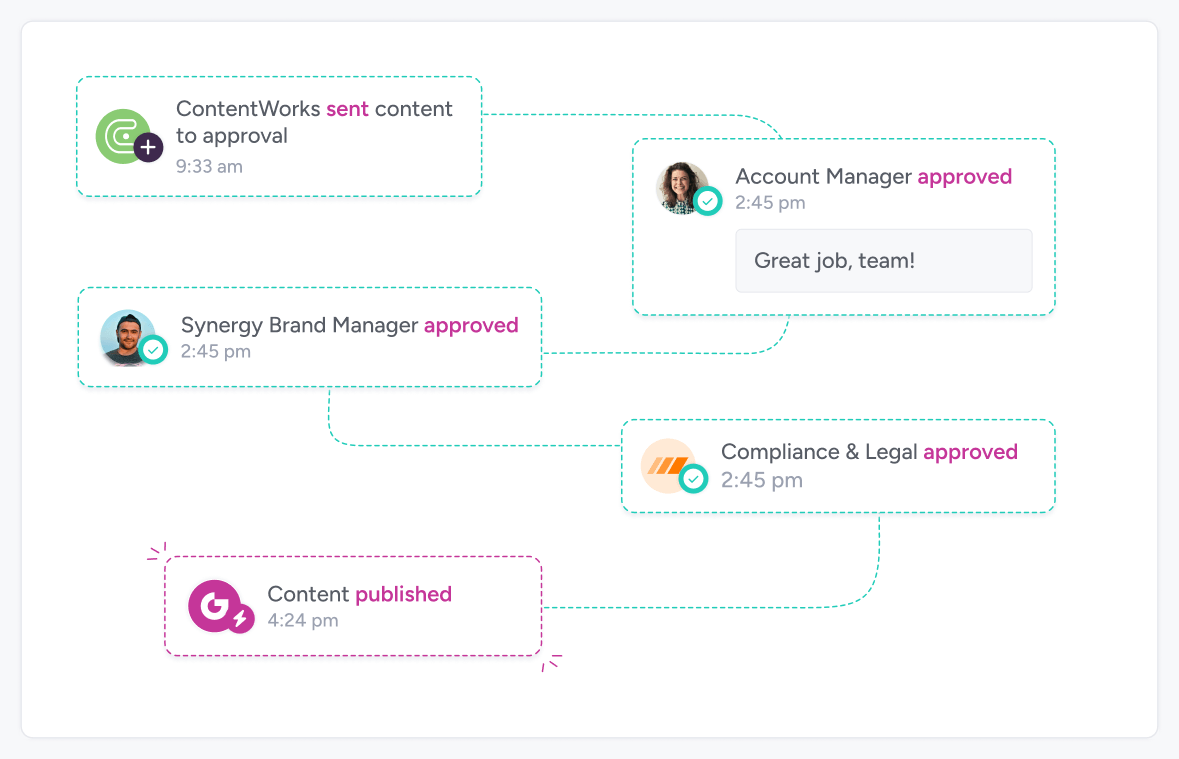Designed by yanalya
You’ve created content for your client and sent it off for feedback, but then you hear nothing. You send one reminder, then another, and another… and now you feel like you’re being annoyingly persistent. However, without client feedback, you can’t publish their content.
For agencies handling multiple clients, chasing down feedback can be frustrating, and it can also kill productivity. And, when feedback finally comes in, it’s often scattered across different platforms. One person pings you on Slack, another tags you on Trello, and someone else sends you an email.
Such scattered feedback disrupts your workflow and often leads to mistakes. This can result in extra revisions, missed deadlines, and frustrated clients—exactly what you want to avoid.
Fortunately, there’s a way to gather feedback without all the hassle. In this blog, we’ll cover practical tips to make the feedback process smooth and efficient.
Here’s what you’re going to learn:
- The Importance of Gathering Client Feedback
- 6 Best Ways to Gather Content Feedback from Clients
- Frequently Asked Questions (FAQs)
The Importance of Gathering Client Feedback in Content Creation
Getting timely client feedback is what drives your creative campaigns forward. Whether you’re working on the initial stages of a new social media campaign or the final draft, you need your clients’ thoughts to ensure the content aligns with their vision.
We also stress that a structured feedback process can prevent mistakes that could cost you clients. Think about feedback spread across emails, texts, chats, meetings, and calls. It’s very easy for an outdated version of the content to get published, leading to unhappy clients. In regulated industries like finance and pharmaceuticals, these mistakes can even cost your agency clients.
Having a clear feedback process ensures there’s only one final version, keeping everyone on the same page and ensuring the right people are involved.
So, how can you best collect feedback from your clients? Let’s explore this in the next section!
6 Best Ways to Gather Content Feedback
1. Stop Using Ineffective Feedback Gathering Methods Immediately
Alright, let’s talk about something that’s probably causing you more headaches than it should– using multiple feedback channels.
If you’re gathering feedback through emails, texts, chats, phone calls, and or Zoom meetings, you’re setting yourself up for a world of confusion. Ditch this practice immediately! It doesn’t serve you, nor does it serve your clients.
Instead, simplify your life by centralizing feedback. Use a single platform where all feedback can be collected, reviewed, and managed (more on this later).
2. Work Out the Best Way to Gather Feedback
Every client is unique, and so is the best way to gather their feedback. Look, you probably have had clients who love doing everything over email and spreadsheets while others hate it.
While we encourage you to have a conversation with your clients about their preferences, you also have to remember that you’re running an agency. You can’t have 20 different ways to gather client input. For your agency to scale, your team to stay sane, and your clients to have a great experience, you need a solid content approval system and some level of automation so you’re not always in the trenches chasing feedback!
3. Set Clear Expectations Early On
Another top tip is managing expectations. From the get-go, set clear expectations about the feedback process. Let clients know when and how you will be seeking their input and the importance of their timely responses.
When you set the tone early on, you can avoid last-minute scrambles and ensure a more organized workflow.
4. Identify Key Stakeholders that Are Involved in Providing Feedback
Content feedback delays often happen because nobody knows who exactly is responsible for reviewing and approving content.
So, to prevent feedback from getting lost or delayed, identify the key stakeholders involved in providing it. This includes anyone who needs to approve or review the content before it goes live. Make sure these individuals are looped into the process from the start and understand their roles. This step is particularly crucial for larger clients with multiple departments or decision-makers.
5. Leverage Collaboration Tools
Using collaboration tools can significantly enhance the feedback process. In fact, 56% of employees believe that collaborative tools can boost efficiency in the workplace. One such tool is Gain, designed specifically for social media agencies.

Gain allows you to manage content approval workflows seamlessly, ensuring that feedback is centralized and easily accessible. With features like automated reminders and an activity and approval tracker, Gain helps you keep track of all client feedback in one place, making the entire process more efficient. Clients can leave comments directly on the content, and you can track changes and approvals in real-time.
6. Arrange Periodic Check-ins to Evaluate Existing Feedback Collection Strategies
Feedback processes need to evolve as your relationship with the client grows. Arrange periodic check-ins to evaluate how well the current feedback collection strategies are working. Are clients happy with the process? Is there something that could be improved? Use these check-ins to gather insights and make necessary adjustments.
FAQs About Gathering Feedback on Social Media Content
Delayed feedback can derail your project timelines. To mitigate this, set clear deadlines for feedback and send gentle reminders as the deadline approaches. Using tools like Gain, you can automate these reminders, ensuring that clients know when their input is due. If delays persist, have a conversation with the client to understand any obstacles and find a solution together.
Use simple and user-friendly tools to make it easy for clients to give feedback. Provide clear instructions and focus on specific areas where you need their input. Keep feedback requests concise and to the point. The easier it is for clients to respond, the more likely you are to get timely and useful feedback.
Sometimes feedback can be too vague to act on. If this happens, don’t hesitate to ask for clarification. Politely request more details or examples to understand their concerns better. Offer to have a quick call or meeting to discuss their feedback in more depth.
The Next Step
Streamlining your client feedback process is simpler than you think. Start by centralizing all feedback in one place and tailoring your content approval workflows to suit each client’s preferences. This will ensure more organized and efficient operations.
To truly transform your approach, integrate Gain into your approval workflow. It’s designed to make feedback collection straightforward and hassle-free. With Gain, you can manage client feedback, track approvals, and keep everything on track, all in one place.
Try Gain at no cost (you don’t even need a credit card).






